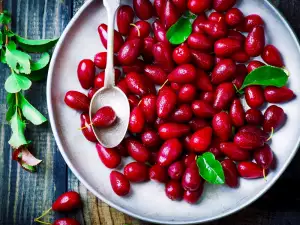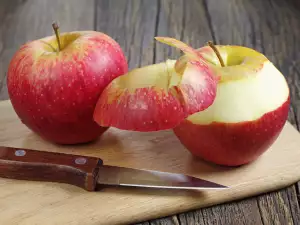Buddha's hand is an exotic citrus fruit possessing a strange shape. It is also known as "fingered citron" and has a pleasant lemon aroma.
For more than 1000 years, the Chinese and Japanese have prized this curious fruit, which resembles a cross between a gigantic lemon and a squid.
The fruit bears the unusual name for its unique shape, reminding of a human hand with extremely well defined fingers. It is one of the strangest-looking fruits.
The origins of Buddha's hand can be traced all the way back to Ancient India and China. The fruit owes its extraordinary shape to a genetic mutation that occurred centuries ago.
It grows as a bush or small tree, covered in thorns. Buddha's hand has large, elongated, pale green leaves. The fruit has a very small inside because it is beneath an incredibly thick rind. Sometimes there's no fleshy part at all.
The tree is highly sensitive to extreme temperatures - it has no fondness of extreme heat, excessively low temperatures and pouring rain. It grows best in moderate climate conditions.
The tree is small and evergreen, reaching heights of up to 16.5 ft (5 m). It gives fruit during the winter.
Composition of Buddha's Hand
The fruit is rich in vitamin C, iron and calcium. 6 g of this fruit contains 1 g carbohydrates, 0 g proteins and 0 g fats.
Use of Buddha's Hand
The flowers of the fruit are fragrant and beautiful. They are white on the outside and purple on the inside. In Asia, the fruits are used as incense for clothes and rooms due to their incredibly strong and pleasant citrus smell. The aroma of Buddha's hand is used in perfumery as well.
Some customs call for bringing the fruits of the tree as gifts in Buddhist temples. The belief is that Buddha prefers fruits with closed, not open fingers, because this symbolizes the shape of the hands during prayer.
In China, Buddha's hand is considered a talisman of luck and a long and happy life. Additionally, it is seen as a symbol capable of bringing prosperity, longevity and fertility.
In Japan, Buddha's hand is a popular gift for New Year's because it is believed to bring happiness. The leaves of the tree repel moths.
Cooking with Buddha's Hand
Unlike other citrus fruits, Buddha's hand is neither sour, nor bitter. If after removing the "fingers" the fruit is cut lengthwise, what little remains of the insides can be used to season fish, salads and other dishes.
The inner white membrane is not bitter and is suitable for use. The rind of Buddha's hand is used as a fragrance for cakes and can even be candied. It's also excellent for flavoring rice.
The rind's taste perfectly complements aromas such as basil and lavender. It provides a refined taste to creme brulee. In general, the rind of the fruit can fully substitute lemon rind.
Benefits of Buddha's Hand
Undoubtedly, Buddha's hand is one of the most attractive citrus fruits because of its form. However, it does not have much in the way of nutritious or health qualities, so you're better off choosing the more familiar citruses.
You don't need to go to China or India to try it though, just eat a lemon instead. The only known effects are its tonic and stimulating ones.

















Comments